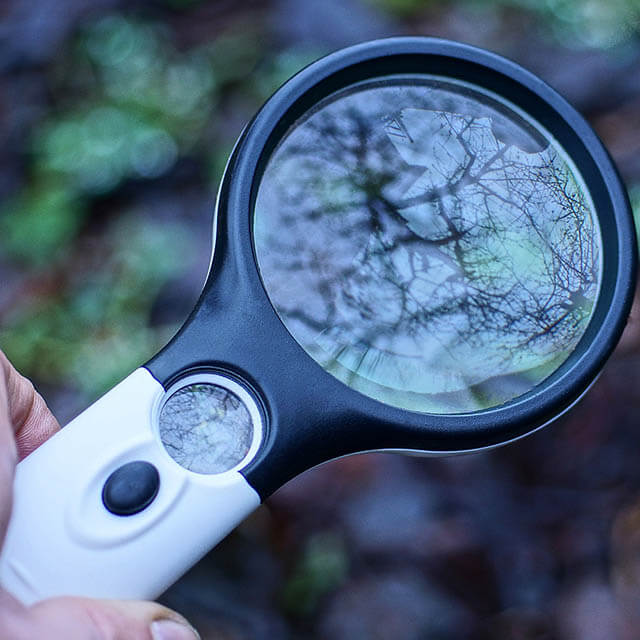Retinitis Pigmentosa
What is Retinitis pigmentosa?
Retinitis pigmentosa (RP) is a genetic eye disease that causes cells in the retina to break down, reducing the patient’s ability to see clearly. Fortunately, a low vision optometrist can help those with RP regain independence. An estimated 1 in 4,000 individuals are affected by this sight-threatening condition, and about half of the people who have RP will have an affected family member as well.
The most common symptoms of Retinitis Pigmentosa include decreased peripheral vision and trouble seeing at night. Though there is no cure for most causes of this eye disorder, there are gene therapies in the works. Luxterna has recently entered the market as a prescription gene therapy product used for the treatment of patients with inherited retinal disease due to mutations in both copies of the RPE65 gene, which can only be confirmed through genetic testing. To use this medication, you must have enough remaining cells in your retina.
Fortunately, RP can be effectively managed with the help of a low vision eye doctor. If you or a loved one has been diagnosed with RP, we can help. Contact Dr. Jill Mogil, who will provide low vision aids and devices, as well as the practical skills needed to manage the condition to ensure the highest possible quality of life.

What Causes Retinitis Pigmentosa?
Retinitis Pigmentosa is an inherited eye disease that results from a mutation in the genes responsible for the healthy development of photoreceptors (cells within the retina that turn light into electrical signals sent to the brain). Cones and rods are the two types of photoreceptors, both of which can be affected by RP. Most forms of Retinitis Pigmentosa initially cause a degeneration of the rods, making it harder to see in dim light. As the condition progresses, the cones, situated at the center of the retina, will be affected. Once the rods become damaged, it is difficult to perceive fine detail and see colors clearly.
Many people with RP develop the condition in childhood or adolescence. The rate of progression varies from patient to patient, but in most cases, a person with RP will become legally blind by the age of 40. Fortunately, a low vision eye doctor can help maximize remaining vision which will enable you to keep doing the things you love to do.

Improve Daily Living With a Low Vision Doctor

We understand that vision loss can make it difficult to perform ordinary tasks, such as reading, watching TV, and recognizing faces — all of which become increasingly difficult for patients with RP. Fortunately, a low vision eye doctor can help you experience sharper vision. But first, let's delve further into the development of this disease.
The beginning stages of RP generally involve loss of peripheral vision and night-blindness. You may find it hard to adjust to a dark or dimly lit room after entering from a bright environment, or you may need to stop driving at night as the poorly lit streets become harder to navigate. Peripheral vision loss leads to tunnel vision, so overtime you'll need to turn your head to view objects that aren't directly in front of you.
Unfortunately, as the condition worsens, you may develop central vision loss, which will result in difficulty deciphering fine details and colors. This may render it challenging to recognize faces, as vision will become even more blurry.
The good news is that there are several ways that Dr. Jill Mogil can help you maximize your vision so that you can continue to work and maintain an active lifestyle.
Increasing the Level of Independence In Patients With Retinitis Pigmentosa
A diagnosis of Retinitis Pigmentosa shouldn't keep you from living life to the fullest. Whether you enjoy reading, watching TV, traveling, or socializing, a low vision eye doctor can provide you with the optimal low vision aid so you can keep doing the things you love to do and maintain your independence.
Whether you are experiencing peripheral vision loss, central vision loss, or night blindness, Dr. Jill Mogil will work with you to recommend the perfect low vision aids and eyeglasses to meet your needs. There is hope for patients of all ages with Retinitis Pigmentosa. Call us today to start your path towards an improved quality of life.
A few examples of commonly prescribed low vision aids and glasses include:
- Side-vision awareness glasses
- Bioptic telescopic glasses
- Low vision magnifying reading glasses
- Prismatic reading glasses
- Tele-microscopic glasses
- Reverse telescopic glasses
- Custom-made optical systems
- Digital magnifiers or close circuit television (CCT)
- Hand-held magnifiers
